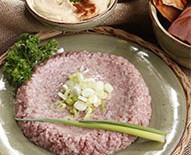Mahraganat: A Revolution of Egyptian Pop Culture, Music, and Dance
Mahraganat is a term that is now showing up all across the dance world! Mahragan or “festival” music was born in Cairo’s slums by the lower classes. Its popularity in Egypt quickly spread to Europe where it is heavily performed (even to the point that it is already considered a legitimate folk dance) and can now be seen making its appearance in South and North America. It has many names, but the most common you will see are mahraganat shaabi, street shaabi, shaabi masri, and electro shaabi. The music is very recognizable and is characterized by electronic or synthesized music and lyrics similar to today’s hip-hop music.
HISTORY
Although many of the artists are now part of Egyptian mainstream music, it has a rough past and is still a controversial hot topic. The residents in Cairo’s ghettos receive very few government services and are often the scene of police brutality and high crime rates. In spite of the hardships, these lower class citizens find means to celebrate each of life’s occasions and often set up impromptu festivals (complete with outdoor stages and fireworks). These festivals are often very masculine and aggressive, but are also a place for women to dance and have fun as well.
Shaabi music (as well as mahraganat) is seen as taboo by the upper class not only because it originated in the lower class areas, but also because the lyrics are often suggestive, obscene, and sometimes mock political figures or movements. The lyrics are designed to relate to the common, poorer Egyptian youth and talk about everything from religion to smoking shisha and are always pushing the limits.
Over the past few years, young Egyptians have developed skills in keyboarding and computer programming that results in a unique mix of electronic sounds over shaabi beats. Some say these electronic sounds were created to mimic popular video game systems. Auto-tune is used to distort voices and create a fun, infectious sound that makes anyone want to get up and dance!
Mahraganat music began catching on and the artists gained popularity due to their new sound, humorous lyrics, and because they were much cheaper to hire than most traditional shaabi stars. With the convenience of YouTube, most artists could self-promote their music for free and gain a wide variety of fans in a matter of seconds. Today in the more popular, trendy quarters of Cairo, mahragan artists are gaining recognition and performing in clubs and venues that are typically reserved for ‘respectable’ artists and are appearing everywhere such as talk shows and movies.
THE DANCE STYLE
Technique
Mahraganat shaabi is so new that the dance style is still being developed every day and is being influenced by hip-hop culture. In fact, the most viral YouTube mahraganat video in Cairo is of an Asian hip-hop dancer! However, Mahraganat is just like traditional shaabi in the technique aspect. It is danced like you would see in clubs and at street festivals. It is typically never choreographed and feels free-spirited and full of energy. Many times, dancers mock the lyrics with their gestures. A great shaabi dancer is one that while performing does such a good job mocking the lyrics, that anyone in the audience (regardless of language spoken) should understand the basic story or feeling in the song. Common technical aspects include very earthy and bouncy movements, juicy hipwork, arm movements similar to western hip-hop that are strong but unrefined, non-complex footwork, strongly emphasized torso movements, a feeling of rawness, and a whole lot of personality!
Gestures
As mentioned above, any shaabi dancer must use authentic gestures to get the point across. The most common you will see is any movement where the hand(s) are a closed fist with the thumb and pinky finger sticking out. This represents knives and fighting in the streets. It is meant to be playful and not aggressive. Dancers will even use their “knives” and hit their hips or shoulders to mimic getting stabbed. It is not uncommon to see dancers even use real daggers in their performance!
You may also see dancers grabbing or holding the area underneath the right side of their chest (in other words, the liver!). This is actually a symbol for love. I’ve heard an Egyptian state that “the heart is fleeting but the liver is forever.” Additionally, shaking your open hand over the liver is a gesture that closely relates to the English expression of having butterflies in your stomach.
Another common gesture is using your fist to pretend like you are grinding flour in your open palm. This translates to something like “you’re dust.” It can be used either as a way of flirting (like they stand no chance) or to your enemy (like you are out to get them).
Costuming
Costuming for mahraganat is pretty undefined, but the general rule is that some sort of street clothing should be worn. Definitely do not perform in an oriental style costume or anything folk related. Most performers wear clothing that is worn by the mahragan artists at festivals- skinny jeans, a cropped tshirt or jacket, a belt, and sometimes a baseball cap. Sometimes dancers will accent these pieces with rhinestones for performances, but it is not necessary.
FUTURE
With the quick rise of mahraganat music and culture, some are concerned about the stability of the new art. Just like hip-hop in the USA had a rough beginning and quick rise, it is very likely that mahraganat will keep growing into a subset of Egyptian pop music. Some mahraganat artists are even trying to break into American culture by mixing Arabic and English lyrics. Its controversial themes keep many songs banned in conservative areas, but there are plenty of clean, fun mahraganats to keep the art form alive and thriving for many years to come.


